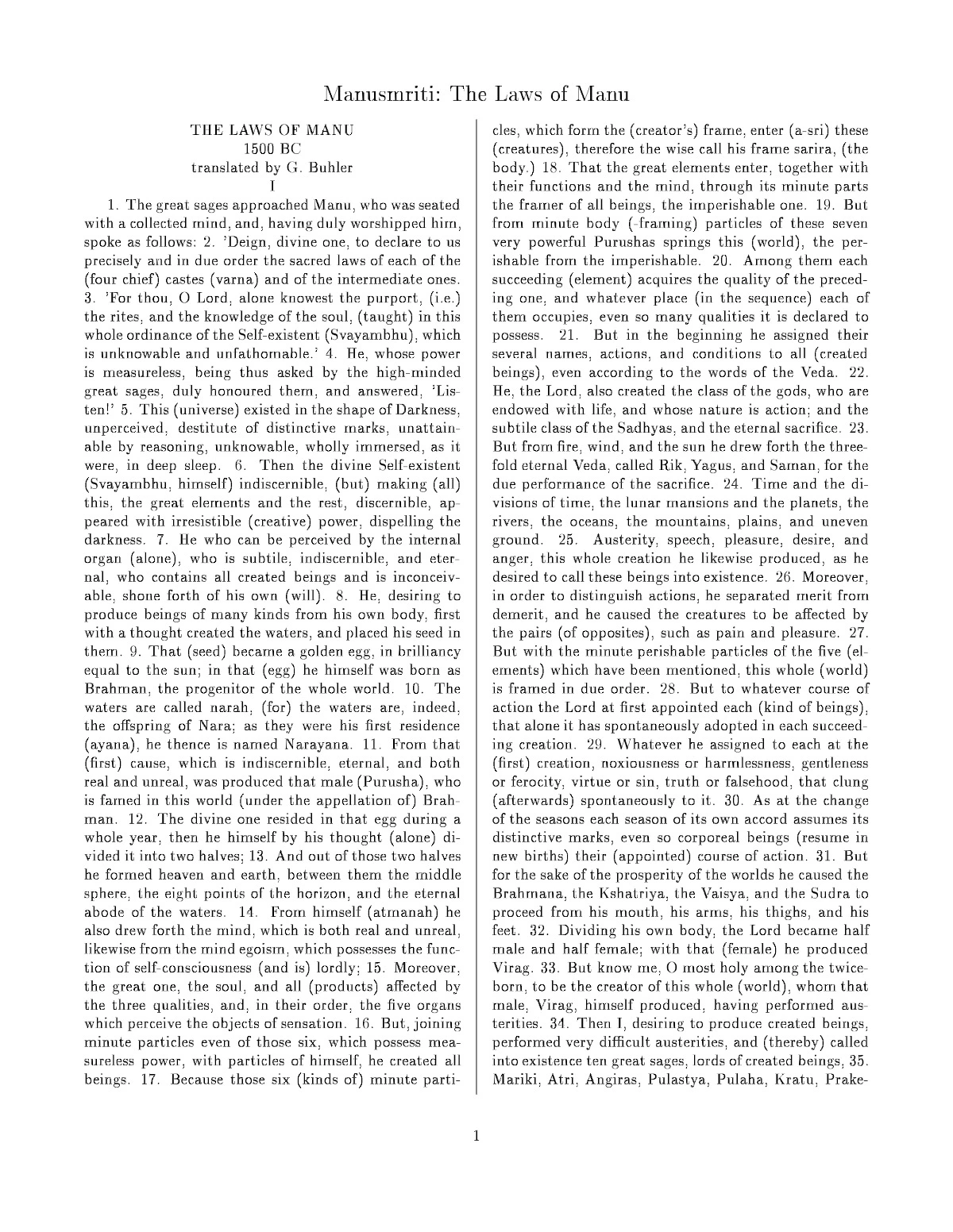The Manusmriti, also known as the Laws of Manu, is one of the most foundational ancient legal and dharmic texts in Hinduism. Composed in Sanskrit, it is traditionally credited to the sage Manu and is considered one of the earliest works of Hindu law. The text is believed to have been written around 200 BCE to 200 CE, although the exact date of composition is still debated among scholars.
The Manusmriti is structured as a discourse between Manu, the progenitor of humanity and the first king, and the sage Bhrigu. The text is divided into twelve chapters, covering various aspects of life, including moral conduct, duties of individuals, social classes, law, and justice.
The Manusmriti – Key Themes
- The Manusmriti emphasizes the concept of dharma, which refers to the moral and ethical duties that individuals must follow according to their age, caste, and stage of life (ashrama).
- The text outlines the duties and responsibilities of the four main varnas (social classes): Brahmins (priests and scholars), Kshatriyas (warriors and rulers), Vaishyas (merchants and landowners), and Shudras (servants and laborers). It emphasizes a hierarchical structure where each class has specific roles and duties.
- Manusmriti describes the four stages of life for a Hindu: Brahmacharya (student life), Grihastha (householder life), Vanaprastha (hermit life), and Sannyasa (renunciate life). Each stage has its own set of duties and responsibilities.
- The text provides detailed guidelines for administering justice, including procedures for trials, evidence, punishments, and the duties of kings and judges. It aims to ensure social order and justice through a well-defined legal system.
- Manusmriti sets forth rules for personal conduct, social interactions, and family life. It covers topics such as marriage, inheritance, dietary practices, and the treatment of women and servants.


